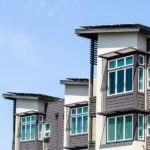Why Repairing Your Home After Termite Infestation Is Important
In many cases, by the time you notice signs of a termite infestation, your home has already been damaged and will need to be repaired. Termites damage and destroy the strength of the wood and weaken it. The more severe the damages are to your home, the greater the likelihood that the support structures of the home will fail, even after termite control services.
As the weight of the home presses down on damaged wood, it will place added stress and eventually result in a failure of the support. Initially, the problem could present itself as sagging flooring, bowing sidewalls, sagging ceilings, or even a sagging roof. At this point, the home is dangerous to be in until proper repairs can be made.
Furthermore, before you can start making repairs, you will need to address the infestation problem and get rid of the termites. If you simply make repairs but fail to resolve the infestation with the proper termite treatment, the termites will continue to cause future damages and will even eat the new wood.
Step 1: Identify and Kill the Termites.
The first thing you need to do is contact a termite exterminator with experience in infestations, like us, here at MightyMite Termite Services. In order to kill the termites, the right treatment has to be applied based on the species of termites.
Two of the most common species are subterranean and drywood termites. Subterranean termites live underground and will build mud tubes in different areas of the home to access the wood and avoid exposure to the outdoors because they require a specific amount of moisture in order to survive. On the other hand, drywood termites will establish their colonies directly in the home because they can survive above ground and get the moisture they need from the wood that they eat.
Treating subterranean termites involves treating the ground underneath and around the home. Your exterminator can recommend different types of treatments to eradicate unwanted guests from your home.
With drywood termites, normally treating the infestation in the home will resolve the problem, although experienced exterminators know they also need to determine the source that led to the termites moving into your home. Often people will have stacks of firewood or other dry, dead wood next to or near the home, which is typically the first point of infestation.
Step 2: Review Your Insurance Policy.
Some insurance policies may cover damages caused by termites. Before you start looking for contractors, tearing out sections of the walls to access damaged areas, or doing any other type of repair work, talk to your insurance agent.
You may discover they will cover some or all of the damages minus your deductible. Insurance companies have specific processes you must follow, like preventing additional damages to already damaged structures. They could also send an adjuster out to see the damages firsthand and, if you have already started making repairs, it could affect how much your insurance company reimburses you for the damages.
Please note that not all insurance policies cover damage by termites. In some cases, you may need a special separate policy or clause. It never hurts to talk to your agent and verify protection or add it if it is offered.
Step 3: Assess the Extent of the Damages.
If you do not have insurance coverage, or, after speaking to your agent and going through the initial processes, the next step will be to determine exactly how much damage the termites have done to the home.
You will want to inspect all “load-bearing” support structures, as these affect the integrity of the home, including beams, joists, and framing structures, as well as frames around doors and windows.
In addition, do not forget to also inspect outdoor wooden structures attached to the home for damages, too, like your deck.
Termites can consume just about any type of cellulose in various forms. Anything made from wood or wood-based materials is at risk. They will eat solid wood, pressboard, drywall, books, furniture, cabinets, countertops, and so on.
Step 4: Start Making Repairs.
You will want to focus on all “load-bearing” support structures first, and then move on to the other areas of the home that need to be fixed. Your contractor will let you know whether the wood can be repaired or if it has to be replaced.
Any wood that has been severely damaged should always be replaced. The wood is weakened and is prone to rotting. Plus, the termite tunnels leave air gaps inside the wood that can create moisture due to changes in temperatures and could cause new problems with mold.
If the wood only has a few tunnels in it or was not completely destroyed, it may be able to be repaired or patched. Repair processes typically involve injecting sealants into the tunnels, which will dry and harden, helping to maintain the strength of the wood.
Step 5: Get Termite Treatments As You Repair.
In major infestations, your contractor will have to tear out drywall to fully access the damaged areas of the home. Take this opportunity to have termite treatments applied while access to the interior structures is available before new drywall is installed.
Your exterminator can work with your contractor to determine an appropriate treatment schedule. For instance, the wooden support beams along an exterior wall have been replaced. Before insulation goes up and drywall hung, now is when you want the wood treated.
Your contractor can move on to another area of the home and start repairs there while the finished area is treated. Taking this approach will ensure all new wood and undamaged, accessible wood is treated to help prevent future infestations.
Step 6: Remain Vigilant and Protect Your Home From Re-Infestation.
Some people mistakenly assume that once the termites causing their infestation have been killed and their homes repaired, they do not have to worry about future infestations. Sadly, this is one myth that could result in a re-infestation.
The only way to prevent another infestation is with vigilance. Even though your termite treatment technician did get rid of the infestation and treated around and under your home, that does not mean termites will not be attracted to your home again. This is why it is essential to develop an ongoing treatment and prevention program with your technician.
You need to ensure your home is protected both inside and outside at all times. Termites never sleep and never stop eating. If you rest on your laurels after having your home repaired, you are basically re-inviting the termites to return to your home.
Aside from having your home treated on a regular basis for termites, you will want to implement other preventative measures to avoid attracting termites close to the home, as follows:
Never Store or Stack Firewood Against or Near the Home.
The pile should be a few hundred feet or more away. Your termite control technician can help you determine the best location for your firewood pile.
Never Stack Firewood Directly Onto the Ground.
Instead, you want to build an elevated structure, like one that is made from cement blocks or brick, and then stack the firewood on top of this.
Have All Exterior Wooden Structures and Exposed Wood Coated in Some Sort of Sealant.
You should have your gazebo, storage shed, detached garage, etc. painted or sealed in some form. If they are not, they could become re-infested.
Make Sure Wooden Fences Are Properly Protected and Consider Termite Treatments.
Most lumber used to build fences is treated wood. However, over time it can lose its effectiveness and get infested with termites unless it is re-treated.
Promptly Remove Any Dead Trees and Shrubbery From the Property.
When a tree or shrub dies, the wood dries out and will attract termites. After all, a termite’s primary function in nature is to break down deadwood.
Never Use Wood Mulch Near the Home.
Sure, different colored wood mulch can look great when used in flower beds and under shrubs around the house. Yet, the wood does dry out, and it will attract termites. As an alternative, consider using recycled colored rubber mulch instead.
Check Out Options For Termite Prevention.
While all exterior wood exposed to the elements should be sealed with paint or something similar, all exposed interior wood such as subarea joists and attic rafters should be coated with a borate product to prevent infestation for up to 15 years, and soil around the perimeter of the home can be treated as well to prevent subterranean infestations. When done as a preventative measure, these treatments are often considerably less expensive than when done after an infestation has already been diagnosed.
The best way to avoid a termite infestation is to prevent it from happening in the first place is to call an experienced termite control company. At MightyMite Termite services, we highly recommend annual termite inspections and regular treatments to avoid termite infestations.
Yet, we also understand infestations happen and cause billions of dollars to homeowners, not just here in California, but throughout the United States. We are also here to help get rid of the termites so you can repair your home.
If you have noticed termites in and around your home or know you have an infestation, or you want to get a termite inspection to find out if your home has termites, please feel free to contact MightyMite Termite Services at 408-377-3761 today!







